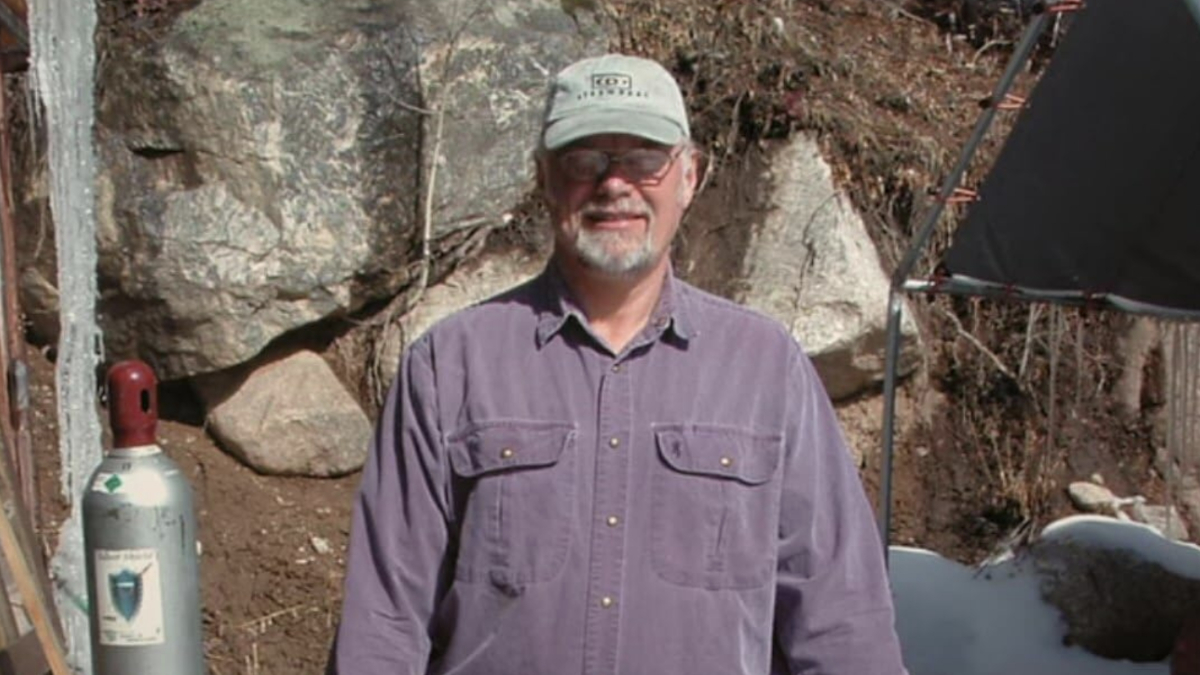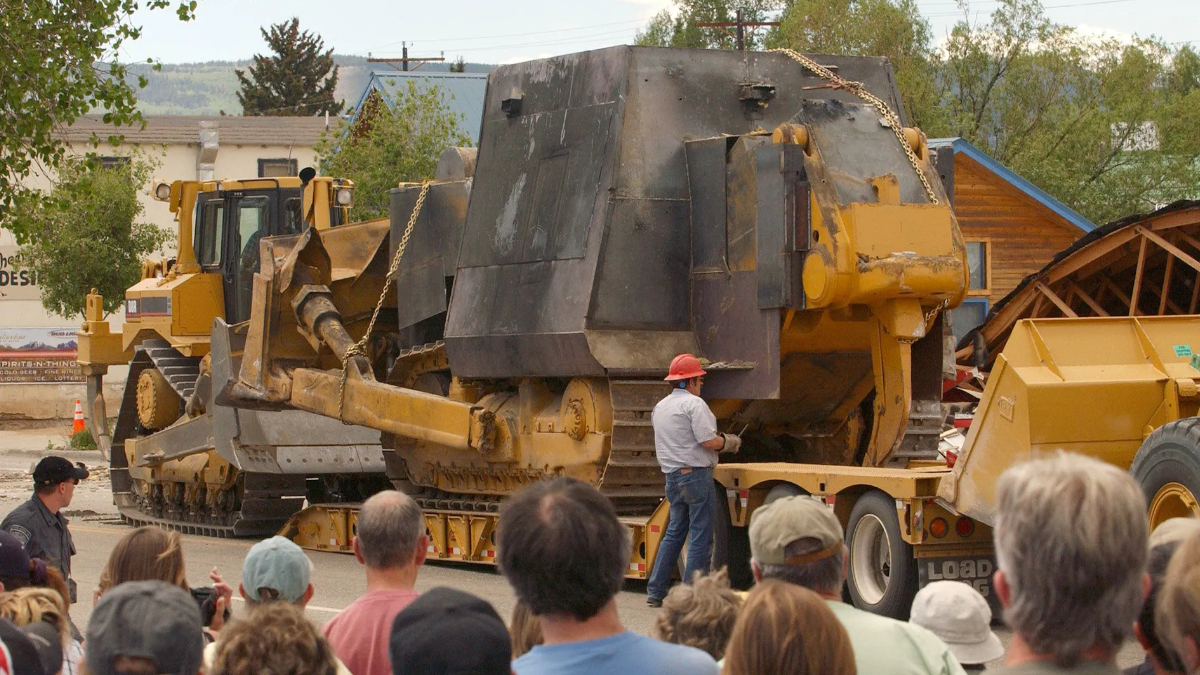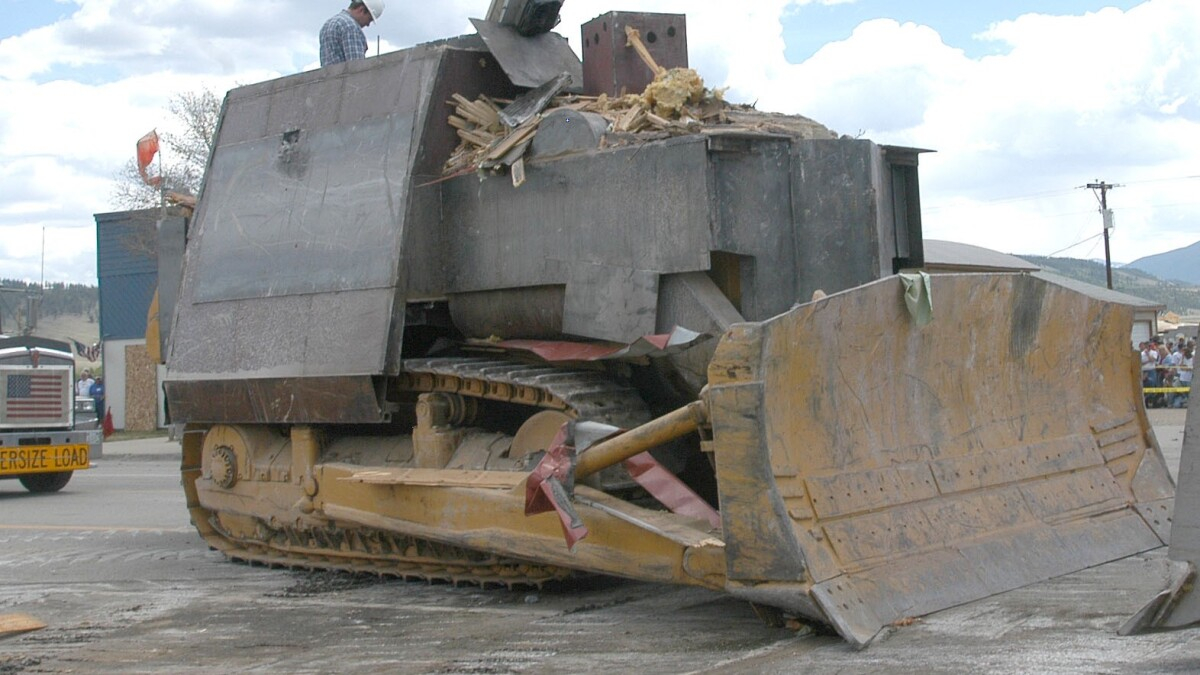Marvin Heemeyer, born on Oct. 28, 1951, in Castlewood, South Dakota, owned an Automobile muffler repair shop and was known “Marv the Muffler Man.” On June 4, 2004, he took his own life after going on a rampage in what’s come to be dubbed the “Killdozer”. So, how did Heemeyer end up dead inside an armor-plated deathmobile?
Heemeyer’s grievances with the people of Granby began in 1992. He attended an auction and spent $42,000 on two acres of land on which he planned to build a new repair shop. Heemeyer claimed that Cody Docheff, a businessman who previously owned the property and was upset at losing it, insulted him for several minutes.
The property’s rudimentary sewage system needed an update. Heemeyer was told the update would cost almost double what he paid for the land. The fact that the government wouldn’t pay for the update angered him, and he described the refusal as “extortion by government fiat.”
More issues arose over the years, including Heemeyer’s launch of a public campaign against the Docheff family’s plans to build a concrete batch plant in Granby in 1997. In 2000, he filed a lawsuit to block the project.
After initially garnering good support for his opposition to the plant’s construction, most of his allies abandoned him in early 2001, and the plans were officially and unanimously approved. Only Heemeyer was left standing against them, and he attempted an appeal based on the premise that the building would obstruct access to his shop, which was denied.
Several attempts to appease and barter with Heemeyer failed, and in one instance, he hung up the phone during a conversation with Joe Docheff.
In 2001, almost a decade after he purchased the land with the faulty sewage system, Heemeyer was found in contempt of town code by the municipal court and ordered to update it before he could inhabit or use the property for business purposes again. After initially agreeing to do so, he quickly decided against it and described the demands as a “form of terrorism.” One of the judgment’s attorneys reportedly heard Heemeyer say, “I’m just going to bulldozer this whole place to the ground.”
What happened after that?

Heemeyer felt his lawyer was to blame for his lawsuit’s failure, and his anger resulted in him demanding a refund. When that didn’t happen, he went to California and purchased a Komatsu bulldozer at an auction for $16,000, with plans to sell it for a hefty profit.
It didn’t sell, and he was forced to close his business, putting every stock item for sale with it. He interpreted the situation as God instructing him to begin his deadly mission.
In October 2003, Heemeyer sold his property to The Trash Co. for $400,000 and took out a lease on half of a building he previously owned, saying he’d need it until he had “finished some work.” He quickly changed the locks and built a wall to cut his half off from the rest of the building. He wanted to embark on his plan in secret.
He fortified his bulldozer with steel and concrete. He also equipped it with guns, video cameras, and monitors to help with visibility when driving it. Heemeyer even told close friends and associates that he had destructive plans with the vehicle and, in audio recordings discovered after his death, he refers to it as the “MK Tank” (or “Marv’s Komatsu Tank”).
He began his rampage at around 2:15 pm on June 4, 2004, driving his 85-ton “Killdozer” through the Docheff family’s concrete plant, firing rounds and demolishing many buildings and structures. Several workers attempted to stop the vehicle by cramming objects into its treads to jam it, but the attempts failed. At that point, state troopers began evacuating the area, including the plant, and initiated a reverse 911 call to nearby residents, prompting them to leave town.
As Heemeyer headed into the town, Granby undersheriff Glenn Trainer climbed on top of the bulldozer and dropped a flash-bang grenade down its exhaust pipe. It had no effect, and he was forced to end his efforts to protect himself from harm.
Heemeyer’s rampage subsequently took him to Granby town hall, the house of the town’s former mayor, a library several children had just been evacuated from (unbeknownst to Heemeyer), and numerous other buildings.
In total, attempts to stop him comprised three external explosions and more than 200 rounds of ammunition fired at his bulldozer, all of which failed to impact the robustly armored vehicle.
Fortunately, despite the “Killdozer” nickname given to Heemeyer’s tank, the prompt evacuation of the area meant he failed to kill any innocent Granby inhabitants. His death came when his vehicle got stuck in the hardware store he was destroying. Knowing his fate would probably be a prolonged spell in jail, Heemeyer used a .357-caliber handgun to shoot himself in the head.
The aftermath

Though Heemeyer endangered innocent people and could easily have killed children, many view him as a folk hero. According to Granby bakery owner Ian Daugherty, Heemeyer “went out of his way” not to harm people, somewhat justifying the hero argument. Others argue he was seemingly pushed to the point of going to extremes to fight the system that had failed him after more traditional methods hadn’t worked.
In April 2005, the town of Granby announced it planned to scrap the “Killdozer.” Individual pieces of the modified vehicle were subsequently dispersed to various scrap yards to prevent people from acquiring them as morbid “souvenirs” of the event.
Netflix has documented the incident in their brilliant 2019 film Tread, which is well worth watching. Granby resident Patrick Bower, author of Killdozer: The True Story of the Colorado Bulldozer Rampage, interviewed his fellow locals, which formed the basis of the documentary, which explains the events in great detail.
Despite Netflix initially distributing the documentary about the incident, it can now be watched on Amazon’s Prime Video.
If you or someone you know is struggling or in crisis, help is available. Call or text 988 or chat at 988lifeline.org. A list of international crisis resources can be found here.






